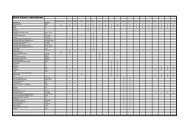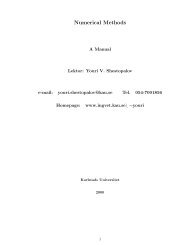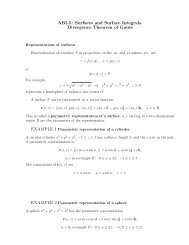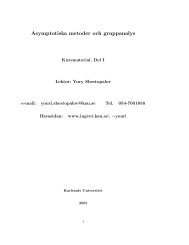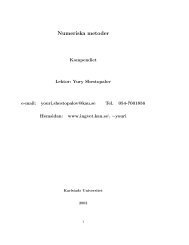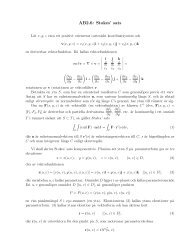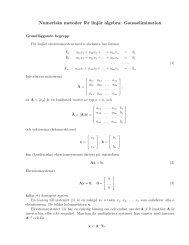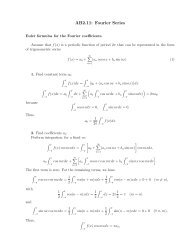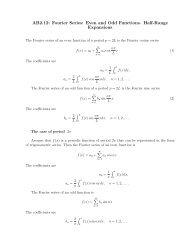Create successful ePaper yourself
Turn your PDF publications into a flip-book with our unique Google optimized e-Paper software.
Example 16 Solve the singular integral equation∫1−1( 1x − y + √1 − y 2 )ϕ(x) √ 1 − x 2 dx = 1, −1 < y < 1; ϕ ∈ L (2)2 .Look for an approximate solution, as well as in the case of (348), in the form of a seriesϕ N (x) =N−1 ∑n=0b n U n (x).Replace K 2 (x, y) = √ 1 − y 2 by an approximate decompositionK (2)N (x, y) = 2 π T 0(y) − 4 [N/2]∑ 1πk=14k 2 − 1 T 2k(y).The right-hand side of this equation is 1 = T 0 (y). Substituting this expression into the equation,we obtain⎛⎞N−1[N/2]∑∑ 1−π b n T n+1 (y) + ⎝T 0 (y) − 24k 2 − 1 T 2k(y) ⎠ b 0 = T 0 (y).n=0Equating the coefficients that multiply T 0 (y) on both sides of the equation, we obtain b 0 = 1;equating the coefficients that multiply T 1 (y), we have −πb 0 = 0,which yields b 0 = 0. Thiscobtradiction proves that the considered equation has no solution. Note that this circumstanceis not connected with the fact that we determine an approxiate solution ϕ N (x) rather than theexact solution ϕ(x). By considering infinite series (setting N = ∞) in place of finite sums wecan obtain the same result.Let us prove the conditions for function f(y) that provide the solvability of the equation∫1−1k=1( 1x − y + √1 − y 2 )ϕ(x) √ 1 − x 2 dx = f(y), −1 < y < 1with the right-hand side f(y) To this end, replace the decomposition of the right-hand sidewhich was equal to one by the expansionf N (y) = f 02 T 0(y) +N∑f n T n (y).n=1Equating the coefficients that multiply equal-order polynomials, we obtainb 0 = f 02 , b 0 = − 1 π f 1,b 2k−1 = − 1 π()2f 2k +4k 2 − 1 b 0 ,b 2k = − 1 π f 2k+1; k ≥ 1.70



